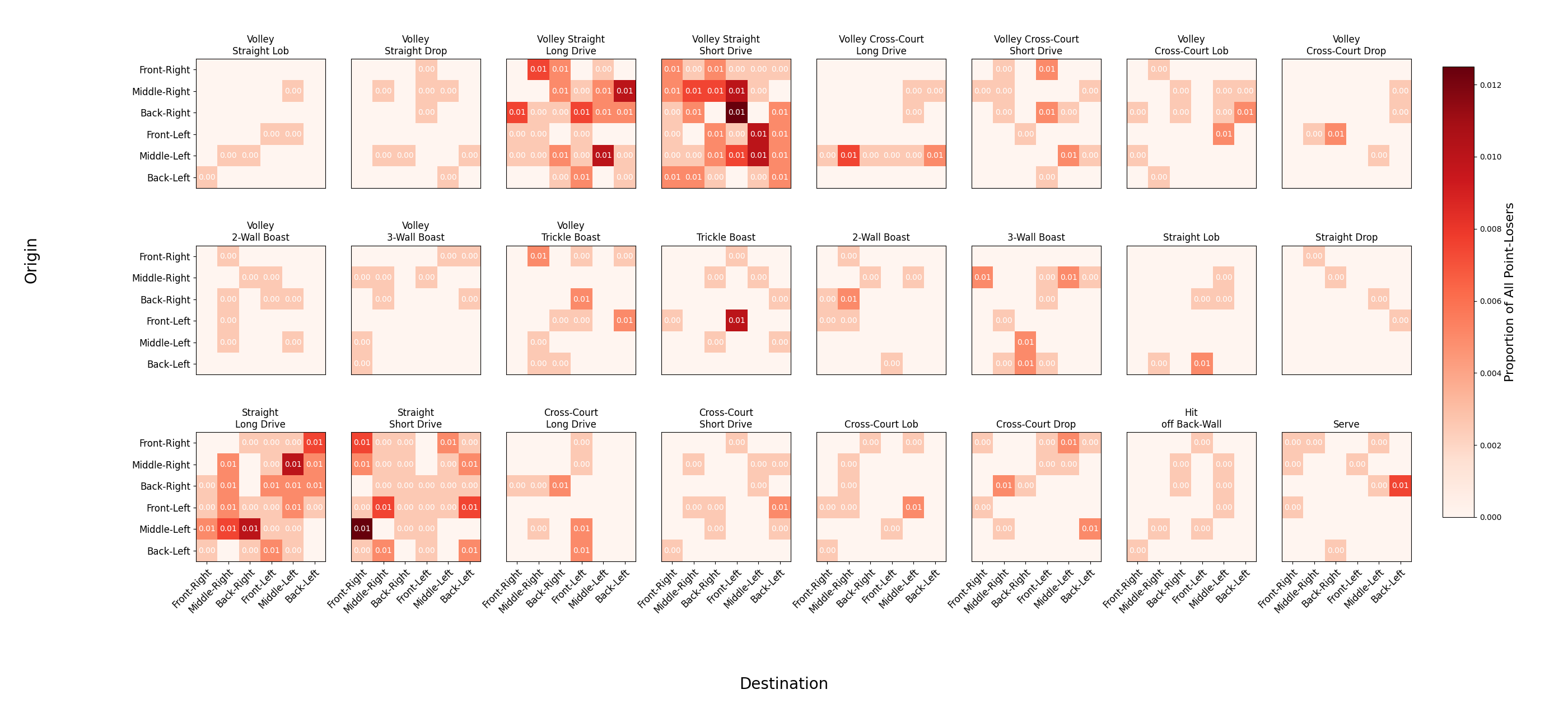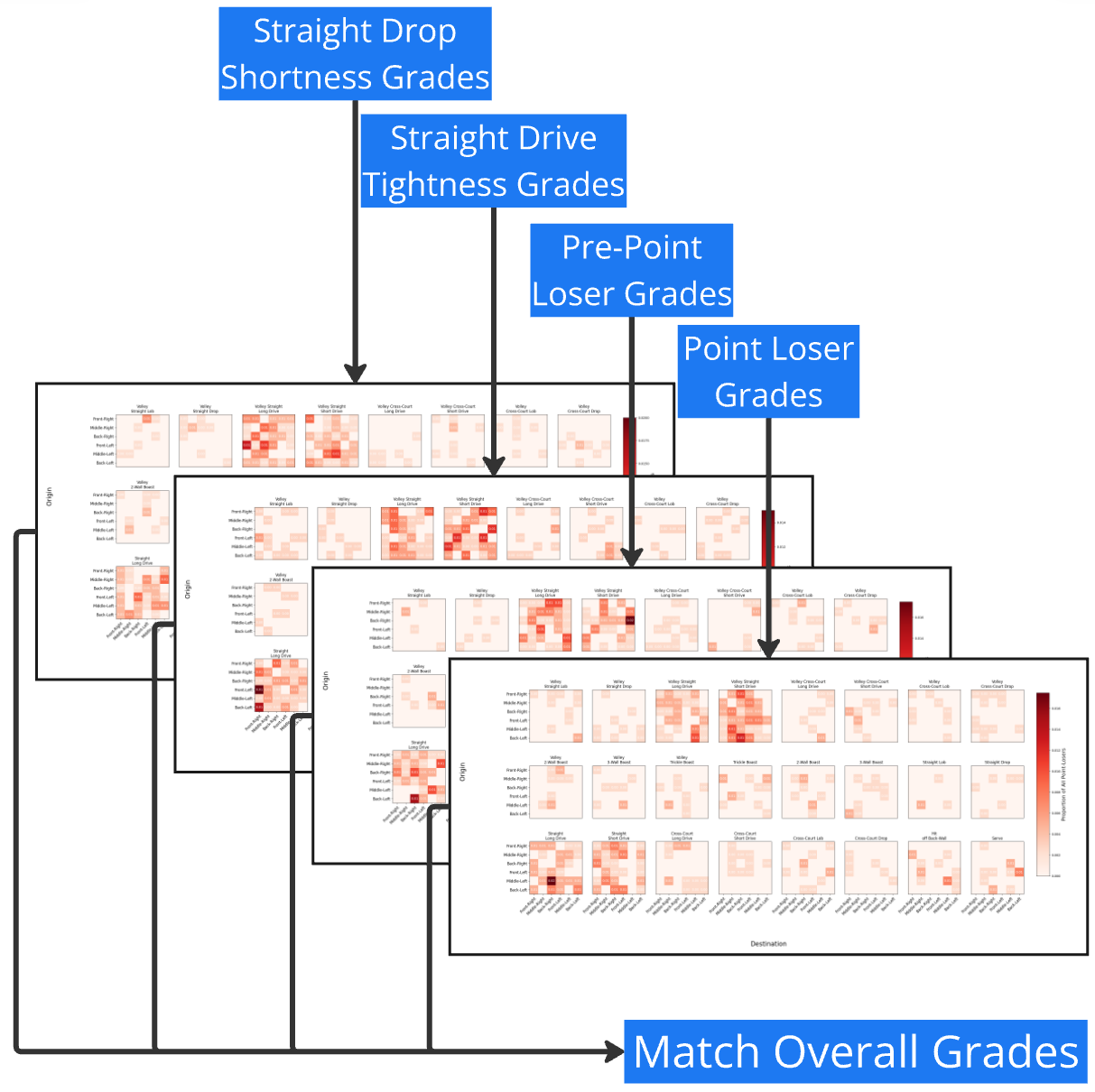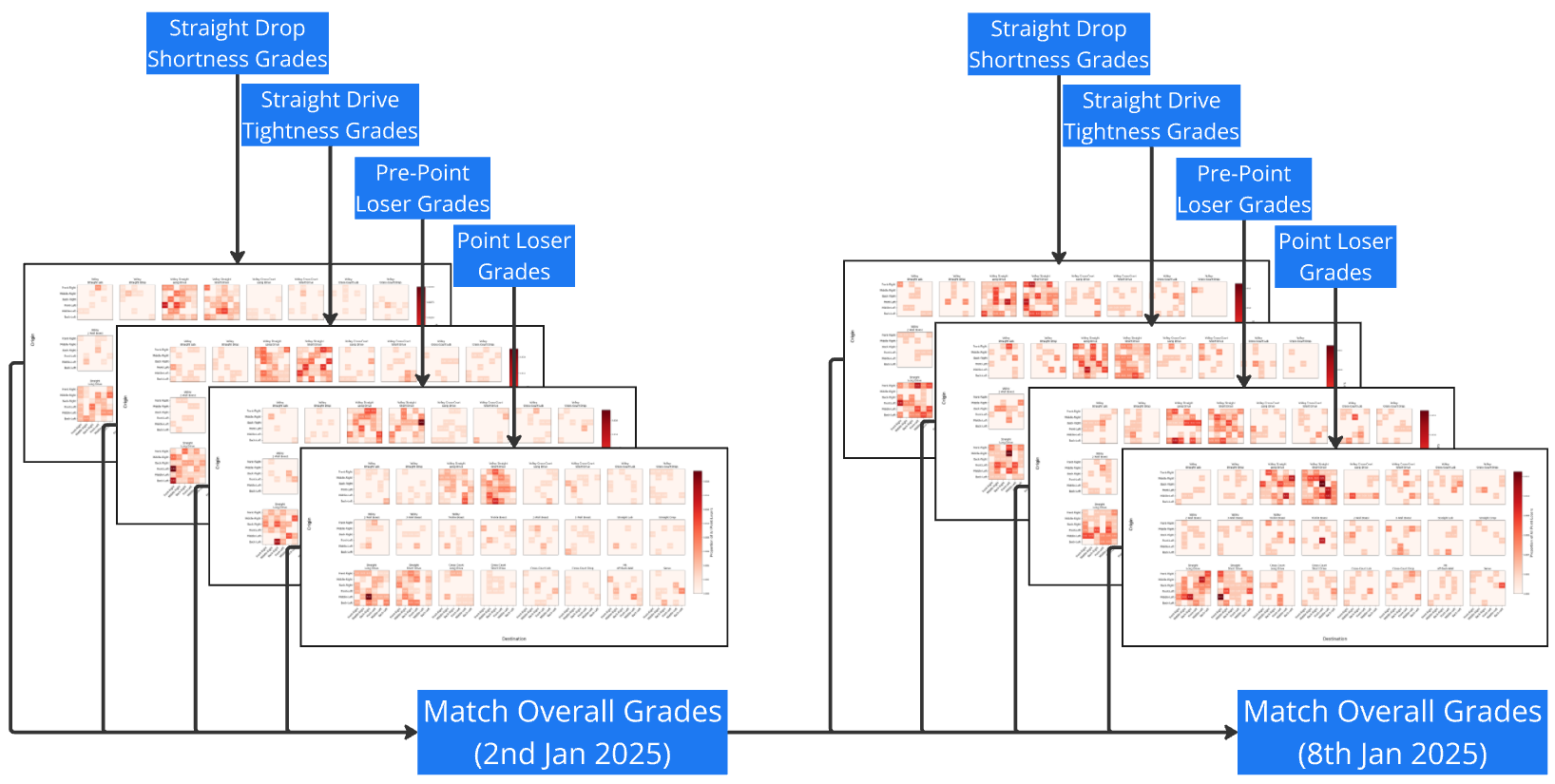How does SquashTrack's Suggestion System Work?
SquashTrack tracks the ball and players in 3D and scores the match. It identifies who hit the ball, from where, and to where. The system improves your game by grading every shot you play and some you receive, like serves. It then suggests working on shots with the worst grades. Your movement patterns are also factored into these suggestions. Each shot is evaluated across different "features" of your game—things like points lost or shot tightness. These grades are combined into a single number (the overall grade) representing the shot's quality. The shots with the lowest overall grades become your improvement targets.
Let's explore how the Suggestion System works by building it up piece-by-piece. We'll start simple and gradually add-in its capabilities. For clarity, we'll use just a few features, though the actual SquashTrack system incorporates many more.
Let's say your match starts with you serving from the right and your opponent immediately wins the point returning your shot. SquashTrack detects this as a "Point Loser" and calculates the grade for the Serve from Middle-Right to Back-Left which was 0 and is now 1.0 (100%) because all of your point-losing shots so-far consist of just this one shot so 100% of your point-losing shots are this one shot. Here's what the system looks like internally while performing this update:
Later in the match, you lose your next point, this time from playing a Straight Long Drive from the Back-Left to the Middle-Left. SquashTrack detects this and recalculates the grades of each shot. Now we have two point-losing shot total and each shot has lost you point each so their grades are both 0.5 (50%) for this feature (Point Losers). The regrading process looks like this internally:
This detection and regrading process continues as SquashTrack receives more shot information. Once you finish your game/match, the system will have graded many more shots. The system internals may look something like this:

Of course, losing a point immediately isn't the only indicator of shot quality. Let's add another dimension to our system: Pre-Point Losers. These are shots that don't lose you the point through your opponent's immediate return, but lead to you losing the point on your next shot.
For example, at the start of the same match, you play a Volley Straight Long Drive from the Back-Left to the Back-Left. Your opponent returns it, and then your follow-up shot, a Straight Long Drive, is intercepted by your opponent who wins the point. The Volley Straight Long Drive here is your first Pre-Point Loser of the match. SquashTrack updates the grades for this new feature (Pre-Point Losers) and the system internals for this feature now look like this:
After your game/match the system internals for the Pre-Point Losers feature may look like this:

The system now has grades for many shots across two features of your game: Point Losers and Pre-Point Losers. If these were the only features the system considered, the grading process would be complete and the system would then combine the grades for each shot across both features.
For example, say the Point Loser Grade and Pre-Point Loser Grade for the Volley Straight Long Drive from the Back-Left to the Back-Left were 0.1 and 0.2 respectively. We could take the average of these grades to get the overall grade for this shot. However, Point Losers are a stronger indicator of shot quality than Pre-Point Losers, so SquashTrack instead combines the grades using a weighted average, giving more importance to the Point Loser grade. After calculating all the overall grades, the system suggests the shots with the worst grades as those that need improvement.
While somewhat useful, these suggestions are still limited because they're only based on Point Losers and Pre-Point Losers. Since the Suggestion System has access to every single shot played and received, plus all your movement, SquashTrack is able to make much more nuanced suggestions by incorporating more features into its grading system.
So, as well as Point Losers and Pre-Point Losers, the Suggestion System might additionally have Straight Drop Shortness and Straight Drive Tightness. Now (almost) every shot has grades for 4 features. As you might imagine we can (and SquashTrack does) add even more features e.g. accuracy of a straight drive's 1st bounce (e.g. did it land behind service box), a cross-court's first bounce, the speed of a shot, the height of a lob etc. The system internals might look something like this with 4 features:

But this still isn't the full picture... You might consistently play a poor Volley Straight Drop from the Middle-Right to the Front-Right in one match and the grade for this shot would be poor across many features (points lost, tightness, shortness etc.) but that shot could have typically been your best shot. It’s just in this one match that your opponent forced errors out of you or some other reason caused you to play this shot poorly.
SquashTrack adds even more nuance to its suggestions by incorporating temporal trends i.e. calculating shot grades across many features not just within matches but also across matches. This means SquashTrack will only suggest improvements for shots that are both objectively low-quality and are consistently played poorly across many matches. With 4 features and the temporal trends the system internals might now look something like this:

In summary, SquashTrack's Suggestion System works by grading every single shot you play and receive across multiple features and across multiple matches. Each shot's grades are combined across features and matches, and the shots with the lowest overall grades are the ones that SquashTrack suggests you should work on. This approach ensures that the suggestions you receive are truly targeting the weakest parts of your game.
